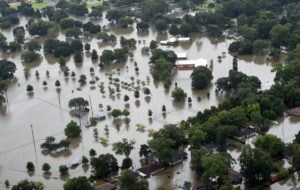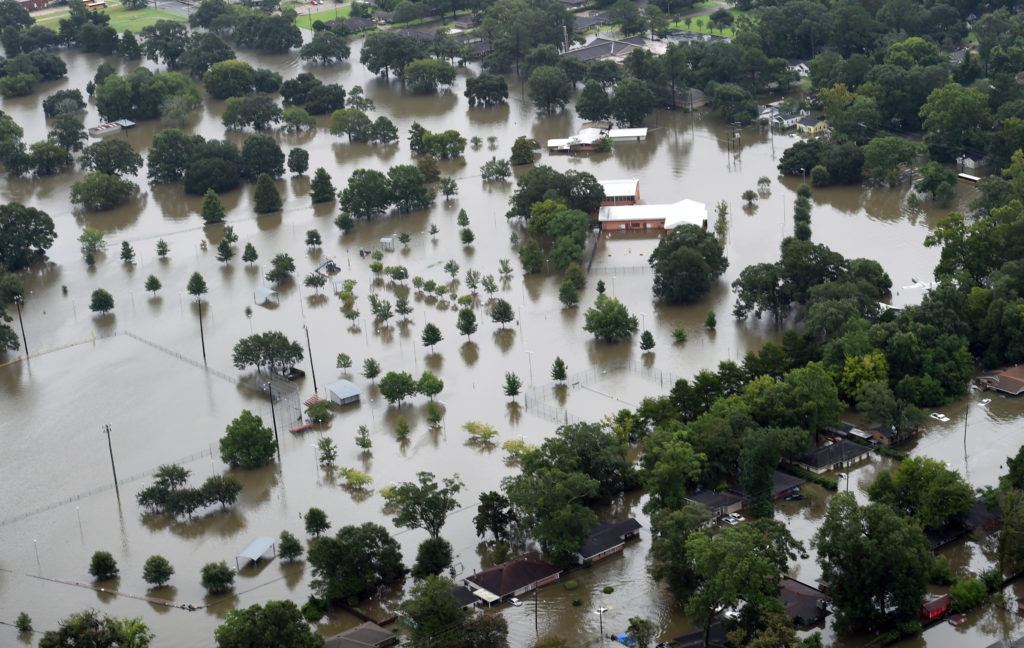Eleven years ago, Sam Barbera hooked up his boat and headed to New Orleans to ferry people from Hurricane Katrina’s floodwaters. Four weeks ago, he found himself in another boat for rescues – this time at home in Baton Rouge, when a massive rainstorm ravaged the area.
It was “night and day,” he said. “Katrina was kind of baptism by fire. It was just people showing up, everybody doing their own thing.”
But during the catastrophic flooding in mid-August, police directed volunteer boats and their owners – nicknamed the “Cajun Navy” – to neighborhoods where water was rising, and social media postings offered guidance on where victims needed help.
“You didn’t have that in Katrina. Katrina was kind of like you just put your boat in. Katrina was mayhem,” Barbera said.
In 2005, the monster storm exposed huge gaps in disaster response plans on local, state and federal levels. More than 1,500 people were killed in Louisiana alone. After the levees failed and inundated New Orleans and surrounding communities, thousands were plucked from rooftops and attics. Response was a fly-by-the-seat-of-your pants effort, with no coordinated strategy for rescues – or what to do with the people saved. First responders were overwhelmed, and many were left to fend for themselves.
Lessons learned from Katrina formed the backbone of state and federal reaction as historic flooding ravaged 20 parishes last month. The response in the immediate aftermath was widely praised by officials and storm victims, Republican and Democrat alike.
But the slog of the longer-term recovery is starting to show that cracks remain in the disaster safety net – and that wariness lingers about federal help after the troubled response to Katrina.
Criticisms are emerging about the pace of housing aid, the size of grants from the Federal Emergency Management Agency, and the question marks that surround rebuilding and recovery.
“I don’t feel like y’all are pushing the issue quick enough or fast enough to be able to get people back in their homes,” state Rep. Clay Schexnayder, a Republican who represents hard-hit areas, told FEMA at a recent hearing on flood response.
Stephan Perkins, 46, was waiting for a FEMA inspector to show up 10 days after he registered with the agency. Perkins had a flood insurance policy that covered the structural damage to his home but not its contents. A neighbor with the same type of flood coverage told Perkins that FEMA offered him less than $200.
“I’m just hearing the horror stories,” said Perkins, a father of two.

FEMA defends its response, saying it has approved more than $575 million in recovery grants for households so far, set up 26 disaster assistance centers and brought more than 2,500 staff to Louisiana.
“FEMA has been on the ground in Louisiana since before the first drop of rain hit the ground. We’ve already provided shelter and support to thousands of families,” agency spokesman Rafael Lemaitre said in a statement.
Perhaps complaints are inevitable when a disaster displaces so many who desperately want to get back to their homes. Officials estimate more than 110,000 homes are damaged from flooding described as the worst disaster since Superstorm Sandy.
But discontent took longer to surface this time, and there’s little disagreement about improvements in the federal and state response in the years since Katrina.
People weren’t left stranded for days without supplies, like at the New Orleans convention center and on interstate overpasses after Katrina. Hospitals and nursing homes weren’t left to fend for themselves when threatened with floodwaters, like in 2005. Shelters allowed pets to come with their owners, to avoid prior disaster scenes where people risked drowning rather than leave pets in flooded homes.
Sgt. Cliff Ortis performed rescue missions for the Department of Wildlife and Fisheries in both disasters. To him, the change was obvious. He noted that state and local agencies now hold regular meetings to chart out disaster response protocols and synchronize efforts.
“There’s definitely a giant education movement from Katrina to now,” Ortis said. “No question the coordination was better.”
Republican Lt. Gov. Billy Nungesser, who rode out Katrina in devastated Plaquemines Parish, said the state and FEMA response “has been right on target.”
That’s not to suggest the response wasn’t without a hitch. Flood damage to AT&T equipment disrupted service and hampered some communication for first responders. Hundreds of motorists got trapped on an interstate when state officials didn’t close it fast enough. Local officials criticized the Red Cross for taking too long to assist with shelters and for turning away donations.
And just like after Katrina, the great challenge moving ahead is funding. With less than one-fifth of storm victims estimated to have flood insurance, Edwards and Louisiana’s congressional delegation are discussing an additional flood aid package from Congress.
Carlette Dawson, 49, said she received $15,000 from FEMA after an inspector visited her Baton Rouge home. Needing much more to repair the damage, Dawson was inquiring about a loan from the U.S. Small Business Administration. Problems with the computer system kept her waiting more than two hours.
“Why is it so hard to get help?” she said.
(Associated Press writer Michael Kunzelman contributed to this report.)
Was this article valuable?
Here are more articles you may enjoy.


 Advocacy Groups Ask FIO to Release Homeowners Insurance Data Collected by NAIC
Advocacy Groups Ask FIO to Release Homeowners Insurance Data Collected by NAIC  AccuWeather’s 2024 White Christmas Forecast Calls for Snow in More Areas
AccuWeather’s 2024 White Christmas Forecast Calls for Snow in More Areas  Senate Says Climate Is Driving Insurance Non-renewals; Industry Strikes Back
Senate Says Climate Is Driving Insurance Non-renewals; Industry Strikes Back  Baltic Sea Countries to Check Insurance on Tankers Moving Russian Oil
Baltic Sea Countries to Check Insurance on Tankers Moving Russian Oil 